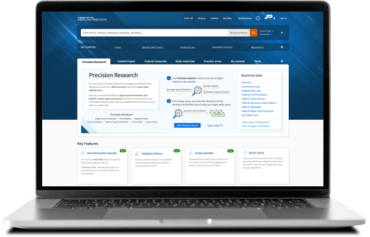Recently enacted legislation has restricted surprise medical billing for health plan participants who receive services at out-of-network (OON) health provider facilities in emergency contexts. The legislation also restricts surprise medical billing for services provided by health providers at in-network facilities and includes protections involving air ambulance services. Effective beginning in 2022, the legislation imposes significant compliance requirements for group health plans and insurers.
A summary of the No Surprises Act guidance
Enacted in December 2020, the No Surprises Act (NSA) (part of the Consolidated Appropriations Act, 2021 (CAA-21)) includes extensive federal protections to prevent surprise medical billing participants in many situations where surprise bills commonly arose. The NSA also imposes limits on out-of-network (OON) cost-sharing for health plans.
Collectively, the CAA-21’s requirements for health plans and insurers, which included surprise medical billing and numerous other requirements, were among the most far-reaching changes for health plans and insurers since the Affordable Care Act (ACA) was enacted in 2010.
The NSA’s surprise medical billing provisions apply to group health plans and health insurers (among other entities, including health providers) through amendments to the Employee Retirement Income Security Act of 1974 (ERISA), the Internal Revenue Code, and the Public Health Service Act (PHSA).
What is surprise medical billing?
Surprise medical billing commonly occurred after a plan participant received services at an OON health care facility in emergency situations or was treated by an OON health provider at an in-network facility. The NSA generally prohibits surprise medical billing in these and other situations. In its place, the NSA establishes a structure under which participants pay cost-sharing for covered services based on an amount called the qualifying payment amount (QPA) and cannot be charged for additional amounts.
An overview of services covered by the No Surprises Act
The NSA’s protections generally apply to emergency services, non-emergency items and services furnished by OON providers at in-network health care facilities, and air ambulance services. However, for non-emergency, non-ancillary services delivered by OON providers at participating facilities, a provider may ask for the participant’s consent to waive the NSA’s surprise medical billing protections.
The surprise medical billing rules became effective in January 2022
The NSA’s surprise medical billing protections apply for plan years beginning on or after January 1, 2022. Starting in 2021, the federal administrative agencies issued regulations, related guidance, and model notices to implement the surprise medical billing requirements. This guidance included significant regulations addressing QPAs (July 2021), independent dispute resolution (IDR) procedures (Oct. 2021), and proposed regulations for air ambulance services (Sept. 2021).
Independent dispute resolution (IDR) guidelines for surprise medical billing
The NSA established a federal IDR process that plans, insurers, and OON providers may use to determine the OON rate for NSA-covered services. Before accessing the IDR process, a plan/insurer and provider must engage in a 30-business-day open negotiation period to reach agreement on the OON rate.
If open negotiations fail, the parties may initiate the IDR process, under which an IDR arbitrator determines the payment amount by choosing either an offer amount proposed by the plan or a competing offer proposed by the provider. The arbitration is baseball-style, meaning that only one party’s offer is chosen.
How the NSA and regulations address qualifying payment amounts (QPAs)
The QPA is a key concept under the NSA. For example, how much a plan participant pays for cost-sharing concerning NSA-covered services is based not on the plan’s OON cost-sharing but on an amount that is generally the lesser of the QPA (that is, the plan’s median in-network rate for the service) and the amount billed by the provider (subject to exceptions).
Also, in choosing which party’s payment offer will govern, implementing regulations included a presumption that the QPA is the correct OON rate for the medical item or service involved. However, this rebuttable presumption has been challenged in litigation brought by health providers and was invalidated in a district court ruling.
The QPA requirements were addressed in lengthy implementing regulations issued in July 2021, which included (among other topics) complicated rules for how the QPA is calculated and inflation-adjusted over time, and rules for consumer complaints.
Practical Law keeps you up to date
Health plans and insurers will need to navigate an evolving regulatory and litigation landscape as they carry out compliance efforts for the NSA’s surprise medical billing requirements. Make sure you’re always updated with Practical Law.












